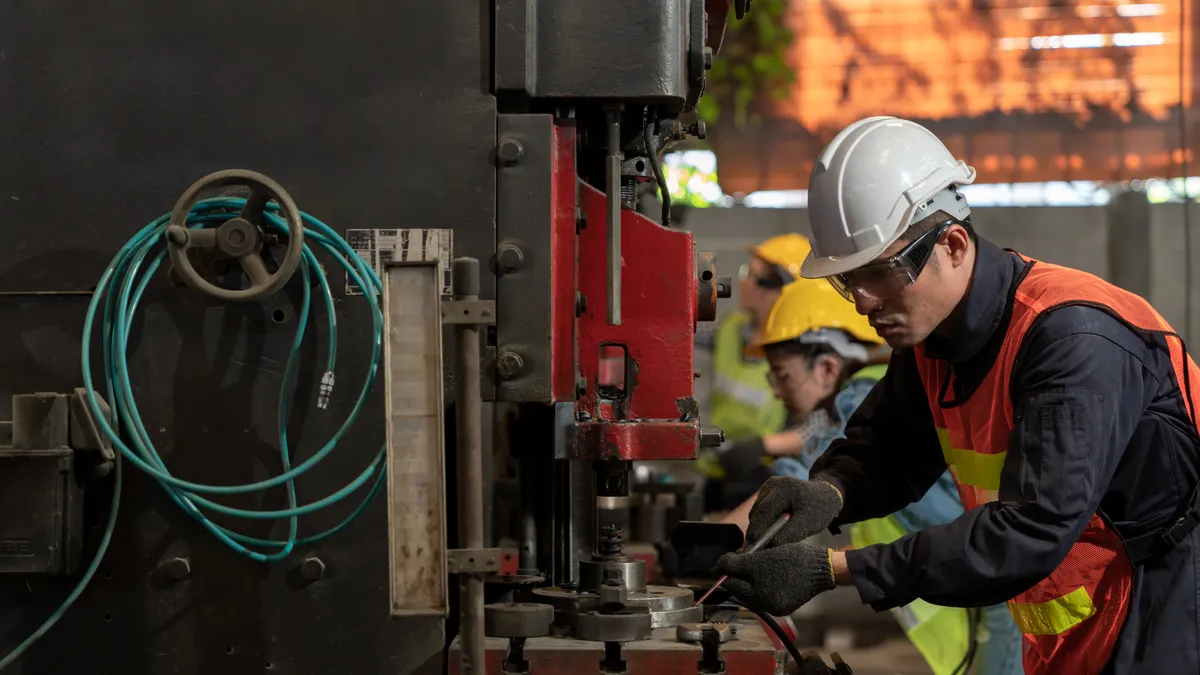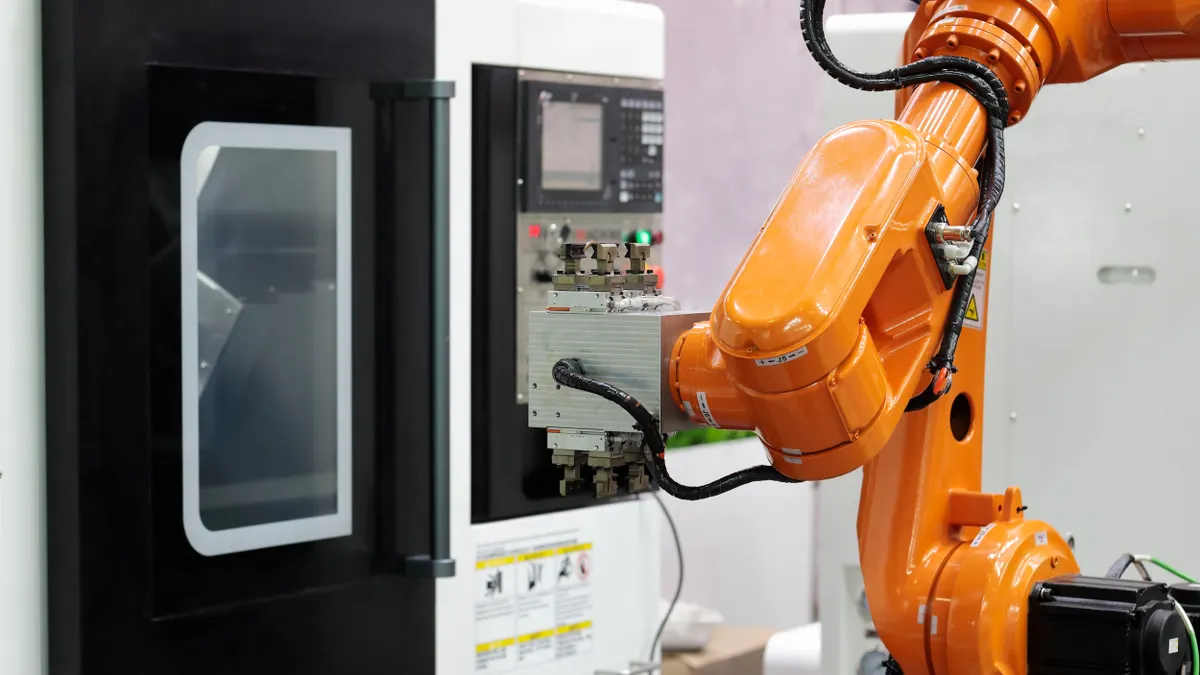Editor's note: This story is the first installment of “For Hire,” a series exploring manufacturing companies' push to attract and retain talent. Have a manufacturing story you want told? Email us at [email protected].
When the National Association of Manufacturers asked its members in August about their biggest business challenges, more than three quarters of them came back with the same answer — attracting and retaining a quality workforce is among their top problems.
The pain among companies is acute. There were more than 800,000 job openings in the industry as of September, according to federal data. And NAM economists estimate the number could rise to 2.1 million if left untreated by 2030.
Retaining high-performing employees is a top strategic priority next year for manufacturers, Deloitte found in an August survey of 100 industry leaders. Over 70% said finding and keeping the right talent was a top challenge in managing the production workforce.
"Companies continue to have workforce issues," said Chad Moutray, chief economist for the National Association for Manufacturers. "Some are raising wages and still are having difficulties finding anybody, which is holding back their ability to expand and stay productive."
Companies aim to improve wages, flexibility to fill vacancies
Some positions are harder to fill than others, but for manufacturers, the issue extends down to the floor.
"Perhaps the biggest challenge is in filling entry-level production positions, which includes roles such as miscellaneous assemblers and fabricators and production worker assistants," said Stephen Gold, President and CEO of the Manufacturers Alliance.
To attract more entry-level workers, many firms are increasing pay. A recent quarterly NAM member survey found that companies expect employee wages to rise by 3.5% over the next 12 months.
The need to more rapidly bump wages is becoming particularly important as manufacturers compete not only against each other, but other industries that attract similar workers, such as warehousing and retail, said Paul Wellener, Deloitte’s vice chari of industrial products and construction practice leader.
Manufacturing vacancies skyrocketed amid the pandemic
Pay alone, however, cannot solve companies' talent woes.
For Wellener, this means companies need to not only offer a high value proposition of competitive wages and other services, but overcome the perception problem that manufacturing is a dated industry.
"Manufacturing has to compete with the other industries and make sure it shows that it's attractive," Wellener said. "It's not the dark, dirty and dangerous manufacturing that our mothers or fathers knew. It is a new cleaner, high tech, more innovative, more diverse manufacturing."
Making manufacturing a more enticing career
A primary way companies are striving to make manufacturing a more attractive career option is by offering upskilling and reskilling programs. The Manufacturing Institute estimated manufacturers spent at least $26.2 billion in 2019 on internal and external training programs for their workers.
"They are people who already know your organization and already know your culture," Wellener said. "How do you continually retrain that workforce so you can move from being on the shop floor to being in supervision?"
Others are tapping into the new trend of flexible work arrangements. The pivot is meant to entice a more diverse workforce, such as younger workers, women, veterans and those with disabilities.
Companies have modified shift schedules, reduced overtime requirements and introduced childcare options as they seek to adjust working cultures, according to an analysis from Deloitte and The Manufacturing Institute published earlier this year.
And while options such as hybrid work schedules can be difficult for manufacturing roles that rely on in-person labor, Wellener noted that companies are getting creative in what they can offer employees.
"You do have to keep factories running, but that's where some of the unique solutions around sharing or providing flexibility or even splitting shifts in different ways [comes in]," he said. "People are really trying to get creative because they know flexibility driven by the pandemic is here to stay.














